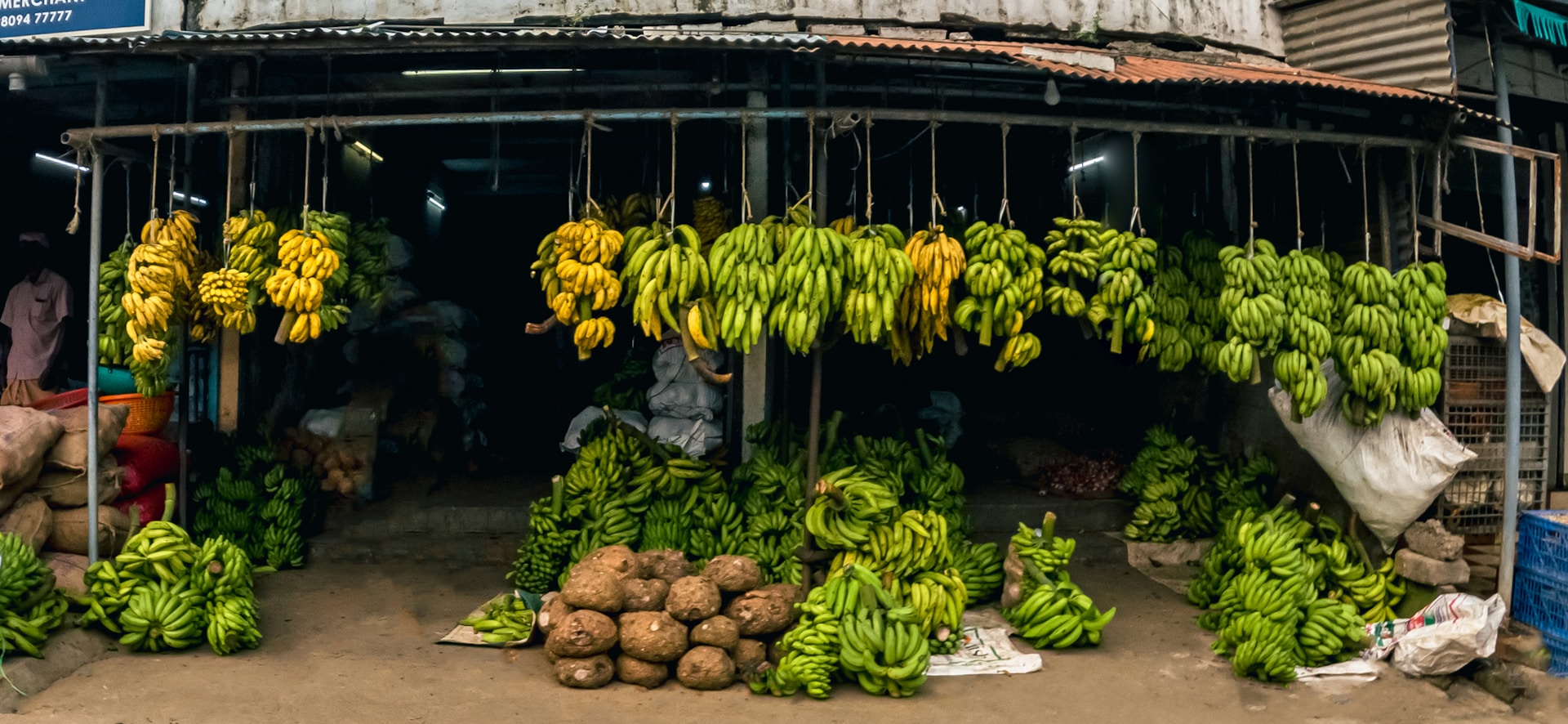The magnitude of global waste has become a pressing concern fostering a multidimensional rethink of our established practices.
One of the key arenas where an urgent intervention is needed, is the sector of produce shipping.
From farm gate to consumer plate, substantial waste occurs that not only diminishes our precious resources but also exacerbates our perch on the precipice of an ecological crisis.
Overcoming this issue requires more than just mere quick fixes.
It necessitates a thoughtful shift towards policies and measures that stress zero waste.
In this article, we will delve into concrete solutions and achievable strategies to address this global concern.
Contents
- Steps To Achieve Zero Waste In Produce Shipping
- 1. Select sustainable materials for packaging.
- 2. Implement Reusable Crates for Shipping
- 3. Optimize Order Volume to Reduce Extra Trips
- 4. Convert Organic Waste into Compost
- 5. Donate unsold, edible food to charities.
- 6. Educate Staff on Waste Management Best Practices
- 7. Invest in waste tracking and reduction technologies
- The Bottom Line
Steps To Achieve Zero Waste In Produce Shipping
1. Select sustainable materials for packaging.
As part of the effort to achieve zero waste in produce shipping, one significant step involves the selection of sustainable materials for packaging.
The typical packaging materials we use today, such as plastic, are non-biodegradable and create a significant amount of waste that harms our environment.
Choosing sustainable packaging materials means going for options that are recyclable, reusable, or compostable, which considerably reduces the trash that ends up in our landfills.
For example, switching from plastic to cardboard or paper-based packaging can significantly cut down on waste.
The beauty of cardboard and paper-based packages is that they are not only recyclable but also biodegradable, and that translates to less environmental pollution.
Another example is the use of bioplastics, which are derived from renewable sources and are often compostable.
However, it’s crucial to balance the need for biodegradability and recyclability with the need for protective packaging, which maintains the quality and safety of the produce being shipped.
An extremely durable alternative is glass packaging, although this can increase shipping weight and associated costs.
Another aspiring sustainable packaging solution could be mushroom-based packaging, which is compostable and has a relatively lower environmental footprint.
Remember, whatever option is chosen, it should ideally be sourced responsibly to ensure that it meets sustainability requirements.
The focus should be on using packaging derived from renewable resources and opting for as much recycled content as possible.
By implementing sustainable packaging choices, business entities not only contribute to environmental conservation but also build better brands.
It’s worth mentioning that consumers today are becoming more conscious about the environment, and most of them are willing to support brands that are environmentally friendly.
Therefore, adopting sustainable packaging solutions will help businesses to be more in line with customer values and preferences which can be a fantastic business decision.
Finally, the movement towards sustainable packaging is not only about selecting the appropriate materials but also about minimizing excess packaging.
By strategically reducing the amount of packaging material used, one can slash waste further while saving on costs.
2. Implement Reusable Crates for Shipping
The implementation of reusable crates for shipping is a crucial step in achieving zero waste in produce shipping.
Traditional shipping methods often rely on single-use, disposable packaging which is not efficient and significantly contributes to environmental pollution.
On the other hand, reusable shipping crates are made of durable materials that can withstand multiple trips, significantly reducing waste.
These crates are designed to be easily cleaned and sanitized after each use, ensuring they are safe for the transport of fresh produce.
The transition from single-use packaging materials to reusable crates is not only environmentally friendly, but it can also tackle the financial challenges associated with waste management.
Investing in reusable crates can certainly have upfront costs, but in the long run, they prove to be cost-effective as the recurrent cost of purchasing single-use containers is eliminated.
The durability and longevity of these containers also minimize the risk of damage to the products, reducing waste and extra costs related to damaged goods.
Moreover, reusable crates can help create a closed-loop supply chain where the same containers are used, returned, cleaned, and reused.
This practice eliminates waste at each step of the shipment process, supporting sustainability, and pushing towards a zero-waste goal.
Additionally, the use of these crates may encourage other businesses to follow suit, helping to create a ripple effect of waste reduction in the shipping industry.
Implementing such an initiative requires careful planning and coordination, but it’s a viable and essential solution for reducing waste in the produce shipping industry.
Institutionalizing the use of reusable crates within the organizational culture, and educating employees about the benefits and handling can go a long way towards successful implementation.
Incorporating tracking systems can also aid in the return and reuse of these containers, making the system more efficient.
Finally, these crates are not only beneficial on the environmental front, but they are also oftentimes more practical and better for shipping purposes, making them an all-around win-win.
The road to achieving a zero-waste policy in produce shipping could be significantly streamlined by paying due attention to implementing reusable crates for shipping.
3. Optimize Order Volume to Reduce Extra Trips
When it comes to achieving zero waste in produce shipping, the optimization of order volume plays a significant role.
This is about finding the delicate balance between supply and demand, where you ship enough produce to meet customer needs without overloading and risking wastage.
The first step in optimizing order volume is to understand your customer’s demand pattern.
By having a clear picture of their buying behavior, it becomes easier to predict demand and strategically plan your shipping.
The use of accurate forecasting tools can greatly aid in optimizing the ordering process by providing reliable, data-driven insights into demand trends.
This means that you can effectively reduce the amount of excess produce shipped, which might otherwise be wasted due to immature or overripe conditions on arrival.
Another aspect to consider is consolidation of orders where possible. For instance, shipping a full truckload of produce is more resource-efficient than multiple smaller trips with part loads.
This is because fewer trips not only reduce fuel consumption and emissions but also minimize the chances of damage and waste during transit.
It’s essential to work closely with your customers and suppliers to coordinate shipping schedules in order to make the most of the full truckload deliveries.
Furthermore, leveraging technology such as IoT sensors can help monitor conditions in transit, enhancing product quality and reducing waste.
Digital platforms or apps can also be employed to factor in real-time changes in demand or supply, allowing for a more agile and responsive system of delivery.
Remember, optimizing order volume is not just about meeting demand, but also minimizing the possible environmental footprint of your operation.
By making fewer, optimized trips, your business can play a valuable role in the broader mission of achieving zero waste in produce shipping.
Implementing and maintaining such strategic ordering and shipping can be challenging but it’s a necessary step towards a more sustainable future.
4. Convert Organic Waste into Compost
The process of converting organic waste into compost represents a significant step towards achieving zero waste in produce shipping.
Not only does it aid in reusing organic matter, but it also minimizes the amount of waste that ends up in landfills.
Composting primarily involves the decomposition of organic material by microorganisms, which ultimately produces nutrient-rich soil.
Decomposition of waste not only transforms it into compost that can be used to enrich soil, but it also prevents harmful methane gas production in landfills.
This process essentially turns a waste product into a beneficial resource, providing a practical solution to the issue of waste disposal in produce shipping.
Most of the waste generated in produce shipping, including spoiled fruits and vegetables and other plant materials, can be composted.
Adopting composting practices means that these waste products can be transformed into a valuable soil amendment that can be used to grow more produce.
This method not only reduces the volume of waste shipped off to landfills but also contributes to improving soil fertility in agricultural systems.
Composting is an environmentally friendly approach that reduces the environmental impact of waste, and it also makes the process of waste management more sustainable.
However, establishing an effective composting system requires a good understanding of the nature of the waste material and the composting process.
Incorrectly managed composting systems, such as those with improper aeration or moisture levels, can create environmental problems as they can produce odours and pollutants.
Therefore, to have an effective and efficient system, waste management personnel should be properly trained in composting techniques and routine monitoring should be conducted.
Moreover, automated systems and technologies can be utilized to simplify the composting process, making it more manageable and reducing the chance of errors.
The incorporation of composting into waste management not only aids in achieving a zero-waste goal but also benefits the environment by reducing the production of harmful greenhouse gases from rotting waste.
5. Donate unsold, edible food to charities.
One impactful step towards achieving zero waste in produce shipping is by donating unsold, yet still edible food, to charities.
This not only reduces waste but also supports communities in need.
Food banks and other organizations are always in need of donations, providing a viable outlet for unsold produce.
In implementing this strategy, businesses would not only be enhancing their corporate responsibility but also reducing waste significantly.
Donating unsold, edible food to charities becomes a win-win situation for both reducing waste and helping the community.
Businesses can partner with local charities to ease the process and ensure that the diverted food waste goes to those who need it most.
It’s important to note that proper packaging and storage should be maintained until delivery to the charities to ensure food safety.
Unsold products that are not suitable for human consumption could still be utilized, for example, as animal feed or composting.
Challenges may arise in the process but with effective planning and coordination, they can be overcome.
Many countries provide tax incentives for businesses that donate edible food, providing another motivation to implement this strategy.
A systematic and regular approach ensures a continuous flow of food to charities and keeps wastage to a minimum.
It’s also beneficial for businesses to communicate their efforts in reducing waste through food donation for better community relations.
Being transparent about these efforts can improve a company’s public image and potentially draw in more customers who favor businesses with sustainable practices.
Finally, an important aspect to consider is the sourcing of food – opting for sustainable and local sources lessens overall environmental impact.
Donating unsold, edible food not only serves the company and the environment but also creates a ripple effect of positive impact on communities at large.
6. Educate Staff on Waste Management Best Practices
Educating staff on waste management best practices is a crucial step towards achieving zero waste in produce shipping.
It involves imparting knowledge and skills about the best ways to minimize waste during the process of packaging and shipping produce.
Training should be all-encompassing, touching on all aspects of the shipping and packaging process.
This is necessary because every stage, from harvesting the produce to delivery to the consumer, has the potential for waste generation.
Regular and consistent training ensures that the entire staff is always up-to-date with the latest and most effective waste management techniques.
There are several ways through which this education can be effected.
In-house team meetings and workshops can be a good start. Here, staff can be educated on the many ways waste can be reduced or eliminated during the shipping process.
Staff can also be encouraged to attend webinars, online courses, and industry conferences that focus on waste management.
Besides, partnering with waste management experts can bring in the necessary expertise. These experts can train staff members on best practices specific to the industry.
However, waste management education should not be a one-time event.
It should be an ongoing process to keep evolving with the best waste management practices.
Staff members should also be trained to adapt to any changes such as changes in technology, shifts in customer demands, or changes in environmental legislation.
Creating a culture of accountability is also critical. Staff members should be encouraged to take responsibility for their actions and ensure that they adhere to the best waste management practices at all times.
Furthermore, rewarding staff for practicing effective waste management can go a long way in pushing for adherence to these best practices.
Remember, each staff member plays a unique role in the pursuit of zero waste. Their knowledge and commitment are vital in ensuring that the company achieves its zero waste goals.
7. Invest in waste tracking and reduction technologies
As we venture further into the 21st century, the role of technology in managing waste is becoming critical, particularly in the process of produce shipping.
Waste tracking technologies offer an innovative approach to tracking and analyzing waste from the source to its final disposal.
The first step in investing in these technologies is to understand your current waste generation patterns.
Next, it is crucial to research and identify suitable technologies that meet your specific needs and business objectives.
These technologies can range from smart containers that monitor waste levels to advanced software that tracks waste across multiple locations and processes.
There is also the option of investing in Internet of Things (IoT) technologies that connect different waste management equipment and systems, providing real-time data on waste generation and disposal.
Moreover, technologies such as GPS and RFID tagging can enhance waste tracking by providing precise information about the waste’s location and the processes it has undergone.
Waste reduction technologies are another essential investment for achieving zero waste in produce shipping.
Investing in equipment that reduces waste size, such as compactors and balers, can increase the efficiency of waste disposal and potentially save costs on waste management.
Similarly, technologies for converting waste into energy or reusable materials can significantly reduce the volume of waste that ends up in landfills.
Furthermore, adopting these technologies would support your adherence to waste legislation and your commitment to social responsibility.
The key to successful investments in waste tracking and reduction technologies is to build partnerships with experienced and trustworthy technology providers.
Providers should offer comprehensive services, including installation, training, maintenance, and upgrades.
Remember that the goal of these technologies is to automate and streamline your waste management activities, thus leading to cost savings, improved efficiency, and a significant step towards achieving zero waste.
Embrace the future and the potential benefits of waste tracking and reduction technologies, and play your part in creating a sustainable environment for future generations.
The Bottom Line
Opting for sustainable materials in packaging, utilizing reusable crates, and optimizing order volume to reduce extra trips can significantly impact diminishing environmentally harmful waste.
Furthermore, transforming organic waste into compost and donating unsold, edible food not only aids in waste reduction but also supports our communities.
Implementing waste management education for staff and investing in waste tracking technology further underlines the need for a comprehensive effort in reducing waste.
Therefore, by incorporating these steps, companies can make a substantial contribution towards environmentally responsible and sustainable business practices.
Not only does this benefit our planet, it could also resonate with increasingly eco-conscious consumers, thereby positively influencing a business’s bottom line.




